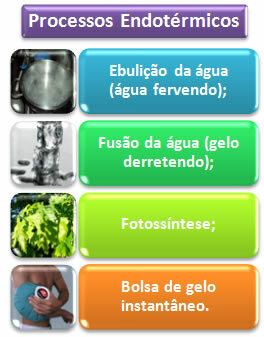Water is an essential element for the life of all species, being responsible for the transport of nutrients in our body, body temperature regulator, participates in all chemical reactions in our body, among many other important factors for life. However, even knowing all these beneficial aspects provided by this natural resource, man, through his economic and industrial activities, is drastically changing the quantity and, mainly, the quality of water available in the Earth.
Water pollution, or water pollution, is caused by the release of industrial, agricultural, domestic sewage and solid waste in water courses, that is, procedures arising from activities human beings. These releases without proper treatment alter the chemical composition of the water, compromising its quality. The impacts generated reach surface and underground waters. The water table (groundwater) is also affected, as polluted water infiltrates the soil, compromising its quality.
Eutrophication is a phenomenon mainly caused by the discharge of domestic sewage into rivers, a since they have a lot of organic matter, a fact that allows the exaggerated growth of algae. This high concentration of algae prevents the entry of light and oxygen, in addition to releasing toxic substances into the water, compromising its quality and promoting the death of many aquatic species.

The discharge of sewage without proper treatment
Underground waters are those that occupy the spaces between the underground rocks and move by the effect of the force of gravity, forming the water table. The amount of groundwater is 100 times more than fresh surface water found in rivers, lakes, swamps, atmospheric water and soil moisture. They are of fundamental importance in the natural water cycle, being responsible for feeding rivers and lakes.
Human activities are primarily responsible for water degradation and reduction. To get an idea of the amount of water used in industrial production, check the data below:
Product / Amount of water used for production
Microchip (2 g): 32 liters.
Cup of coffee (125 g): 140 liters.
A4 sheet of paper (80 g/m2): 10 liters.
Cotton t-shirt (250 g): 2,000 liters.
Pair of leather shoes: 8,000 liters.
1 kg of potato: 160 liters.
1 kg of rice: 1,500 liters
1 kg of bread: 150 liters
1 liter of milk: 1,000 liters.
Water pollution is also promoted by man. Trash can take hundreds of years to decompose in water. Check the amount of time it takes some objects to disappear into water bodies.
Newspapers: 2 to 6 weeks.
Paper packaging: 1 to 4 months.
Fruit peels and paper napkins: 3 months.
Cigarette butts and matches: 2 years.
Chewing gum: 5 years.
Nylon: 30 years.
Plastic bottles (PET): 100 years.
Aluminum cans: 200 years.
Cotton gloves: 5 months.
Disposable diaper: 450 years.
Glass - indefinite time.
Piece of painted wood: 13 years.
Plastic cup: 50 years.
Condom: 300 years.
By Wagner de Cerqueira and Francisco
Graduated in Geography
Brazil School Team
Previous page - Curiosities
geography - Brazil School


